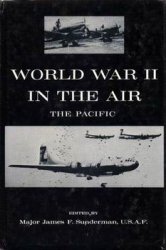AIR EUROPE, LTD.: United Kingdom (1978-1991). Created to provide international package tour jet flights to Mediterranean holiday locations, AEL is formed by Harry Goodman on July 18, 1978 as a subsidiary of his travel-oriented holding company, Intasun Leisure Group, Ltd. It is initially known as Inter-European Airways, Ltd. Renamed in early 1979, Air Europe, Ltd. acquires three Japanese-financed Boeing 737-2S3s. Charter flights commence from the London (LGW) base on May 4.
On the year, the new carrier flies 322,000 travelers. Revenues total $16.5 million and expenses are $12.5 million; the operating profit is $4 million and the net profit is $2.4 million.
The workforce is increased by 50% in 1980 to 282 and two more B-737-200s are delivered. Emphasis is placed on the development of traffic from Manchester and other British regional points. An aircraft cross-leasing arrangement is entered into with Air Florida and the carrier becomes the first British airline authorized to transport mail on inclusive-tour charter flights.
Enplanements are more than doubled with 708,000 transported aboard five B-737-2S3s; the increase is actually 119.9%. Revenues of $52 million are earned and expenses of $42.1 million incurred; the operating and net profits are, respectively, $9.9 million and $7.4 million.
The employee population grows by 15% in 1981 to 324 and an additional B-737-2S3 is acquired. New markets are entered in the Mediterranean and a line engineering organization is established at Gatwick Airport.
Passenger boardings surge 42%, passing the l-million mark in annual bookings for the first time (1,018,000); two-and-a-half tons of cargo are also transported.
The workforce grows to 425 in 1982 as yet another B-737-2S3 joins the fleet. Enplanements rise 24% to 1,264,000.
By 1983, airline employment has reached 500. On April 6, the company takes delivery of its first B-757-236, becoming one of the first charter carriers to receive the advanced single-aisle Boeing; it is immediately leased to British Airways, Ltd. (2). The year’s passenger total is 1,446,000, a 14% increase.
A second B-757-236 is placed in service in 1984. British government approval is received to launch scheduled flights to Spain and other southern European destinations. With a downturn in the charter market, arrangements are made to sell three of the small Boeings to Guinness Peat Aviation, Ltd.
With the addition of a third B-757-236 in 1985, the three B-737-2S3s are sold. In addition to its 32 charter destinations around the Mediterranean as far east as Israel, the company inaugurates scheduled service to Palma, on the Spanish island of Majorca, during May. In September, $100 million in orders are placed for four 737-300s and scheduled flights commence from London (LGW) to Gibraltar on November 1.
Air Europa, S. A., a new Spanish charter operator, sells 25% of its stock to AEL in June 1986.
In November, a B-737-3S3 is leased from the ILFC for delivery six months later; the five-year package will cost the carrier $15 million. Permission is sought to begin operations from London (LGW) during the following November.
Enplanement figures for the year are not released.
In 1987, the workforce is increased to 750. In February, orders are placed with ILFC for 10 additional jetliners, 5 B-757s and 5 B-737-400s, several of which are to be supplied to Air Europa, S. A.
In May, the carrier receives authority to operate scheduled services to Brussels, Paris, Frankfurt, Amsterdam, Munich, Geneva, and Copenhagen. Scheduled flights begin to Paris and Brussels in June, following delivery in May of the B-737-3S3, and from Manchester.
Further European scheduled services are put on hold in September as the result of an announcement from British Airways, Ltd. (2) that it will be taking over its largest independent competitor, British Caledonian Airways, Ltd. (BCAL). It is initially believed in corporate headquarters that BA will so dominate the gates at London (LGW and LHR) that AE will be unable to compete.
Also in September, Air Europe enters into a lease agreement with Qualitair Aviation, Ltd., at London (STN), for the utilization of the latter’s new $34-million aircraft maintenance facility.
Twenty-five members of the company’s management team now purchase all shares of the airline’s ordinary back from its London City investors for $265 million. Convertible shares are held by several financial institutions, including General Assurance and Bankers Trust and Legal.
Although boarding numbers are again withheld, it is noted that a total of 3.37-billion revenue passenger kilometers are flown, a 54.9% increase.
The workforce is increased by 66.7% in 1988 to 1,200 and the fleet now includes 9 B-757-236s, 12 B-737-3S3s, and 4 leased B-737-3S3s. Chairman Goodman’s carrier inaugurates scheduled service on the London to Paris route during March. In protest of mandated high airfares on the route, the airline begins a promotion refunding $25 on every $150 ticket purchased.
Orders are placed in April for 8 B-737-4S3s, 20 B-757-236s, and 7 Fokker 100s. In November, business-class service is introduced, along with a new corporate identity, which features new aircraft liveries.
In December, in anticipation of a single European market in 1992, the carrier’s owners, International Leisure Group, form a Dutch-based panEuropean holding company, Airlines of Europe. Plans are made to link up a number of airlines in different countries under a common Air Europe moniker.
A total of 1.5-million charter and 500,000 scheduled passengers are flown on the year as revenues jump to $390 million. The operating profit is $22 million.
The payroll balloons 57.9% in 1989 to 1,806 as the first four Fokker 100s enter service. Early in January, Airlines of Europe reaches agreement with Air Europa, S. A., which now joins the ILG consortium; ownership in the Spanish airline is divided between the Bank of Bilbao (49%), the Spanish tour operator Iberiojet (26%), and AEL (25%).
A $1.8-billion order is placed in February for six Rolls Royce powered McDonnell Douglas MD-11s. In April, flights commence from London (LGW) to Malta, with frequencies reaching four roundtrips each week in May and daily in July. Meanwhile, in May, weekly roundtrips are introduced to Malta from Manchester.
In July, the company joins the Galileo computer reservations system (CRS). Five additional new markets are also entered from London (LGW): Stockholm, Copenhagen, Oslo, Rome, and Dusseldorf while flights also begin to Malta from Manchester. Employing a B-747-200 leased from Tower Air, charters are undertaken to North America, the Indian Ocean region, and the Far East. When KLM (Royal Dutch Airlines, N. V.) cancels its Fokker 100 order, AEL, which has 11 of its own awaiting delivery, is able to obtain four early from the ALM leasing group. Fokker agrees to provide the pilots for the six-month start-up period and, thus, AEL initiates Fokker 100 service over its European route network on December 4.
Passenger boardings for the year leap upward by 30.9% to 3,537,734 while freight climbs 42.5% to 535.23 million FTKs. The Air Leisure Group, of which AEL is the key Airlines of Europe group subsidiary, reports revenues of $1.16 billion and an operating profit of $56.8 million.
Company employment is increased by 18.6% in 1990 to 2,142 and the fleet includes 6 B-757-236s and 12 B-737-3S3/4S3s. A total of 150 scheduled departures each week are flown from Gatwick Airport, with 4 more from Manchester. In June, the European Commission rules that Deutsche Lufthansa, A. G. should abandon its tactics designed to discourage the carrier’s low fares on its London-Munich route. The first owned Fokker 100 arrives in October and the carrier now claims to be the U. K.’s second largest scheduled carrier.
Customer bookings for the year ascend 4.6% to 3,700,000 (including two million vacations).
Blaming the Gulf war, high interest rates, recession, its own debt load, and the collapse of Omni Holdings, its largest shareholder, the International Leisure Group and flagship airline suddenly suspends service on March 8, 1991 and files for bankruptcy, citing net liabilities of ?300 million ($555 million) and contingent liabilities, primarily for booked vacations, of ?250 million ($460 million). Upwards of 25,000 U. K. passengers are stranded; however, all are returned by other airlines under a ?63-million ($116-million) bond previously posted by ILG with the Tour Operators Study Group. Of the 10,000 scheduled service passengers, only those who paid with credit cards can avoid becoming unsecured creditors.
The Italian member of the Air Europe group, Air Europe, S. p.A., attempts to purchase the enterprise and keep it going, but is unsuccessful. An unofficial homepage can be found on the World Wide Web at Http://our world. compuserve. com/homepages/martin_andrews/ae. htm.




 World History
World History









